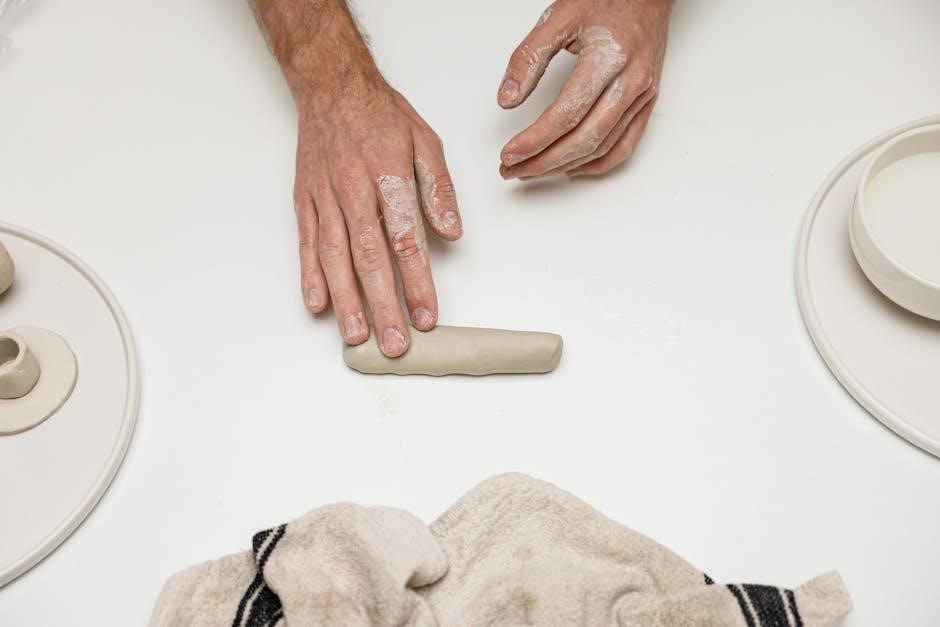Amar Chitra Katha, launched in 1967 by Anant Pai, brings Indian mythology, history, and folklore to life through vibrant comics. Now, these timeless tales are accessible in convenient PDF formats, preserving cultural heritage for modern readers.
Overview of the Comic Book Series
Amar Chitra Katha is a beloved comic book series that has captivated readers with its rich storytelling and vibrant illustrations. Since its launch in 1967, it has grown to include over 400 titles, covering Indian mythology, history, folklore, and biographies. With over 100 million copies sold worldwide, the series has become a cultural phenomenon, cherished by both children and adults. Each comic book is meticulously crafted to retell timeless tales, blending entertainment with education. The series has also expanded into digital formats, including PDF versions, making it easier for modern readers to access these classic stories. Amar Chitra Katha’s diverse range of themes ensures there’s something for everyone, preserving India’s cultural heritage for future generations.
Historical Background and Significance
Amar Chitra Katha, meaning “immortal pictorial tales,” was launched in 1967 by Anant Pai, who sought to preserve and popularize Indian mythology, history, and folklore. Recognizing the declining interest in traditional stories among youth, Pai envisioned a platform to reconnect generations with their cultural roots. The series has since become a cornerstone of Indian storytelling, blending mythology and history with engaging visuals. Over 400 titles have been published, covering epics like the Mahabharata and Ramayana, biographies of historical figures, and regional folktales. With over 100 million copies sold, Amar Chitra Katha has transcended generations, serving as both entertainment and an educational tool. Its digital adaptation into PDF formats ensures accessibility in the modern age, continuing its legacy of cultural preservation.

Origin and Evolution of Amar Chitra Katha
Founded by Anant Pai in 1967, Amar Chitra Katha revolutionized storytelling by blending Indian mythology, history, and folklore into engaging comics. With over 400 titles and millions sold, its evolution includes digital formats like PDFs, enhancing accessibility and preserving cultural heritage for modern readers.
Founder Anant Pai and His Vision
Anant Pai, fondly known as Uncle Pai, was the visionary founder of Amar Chitra Katha. He aimed to introduce Indian children to their rich cultural heritage through engaging comic books. Pai believed in blending education with entertainment, making history, mythology, and folklore accessible to all. His vision was to create a series that would not only entertain but also educate, fostering a sense of pride in India’s diverse traditions. Through Amar Chitra Katha, Pai ensured that timeless stories were preserved and passed down to future generations, making it a beloved part of Indian childhoods and beyond.
Launch in 1967 and Initial Reception
Amar Chitra Katha was first introduced in 1967 by Anant Pai, marking a milestone in Indian comic book history. The initial launch was met with curiosity and enthusiasm, as the series offered a unique blend of mythology, history, and folklore. The first issue, titled “Krishna,” set the tone for the series, showcasing vibrant visuals and engaging storytelling. The comics quickly gained popularity, resonating with both children and adults. The initial reception highlighted the need for culturally relevant content, and Amar Chitra Katha filled this gap effectively. By aligning with the national movement to promote Indian culture, the series became an instant favorite, laying the foundation for its enduring success.
Growth and Expansion Over the Years
Since its inception in 1967, Amar Chitra Katha has grown significantly, becoming a beloved cultural icon. The series expanded its catalog to include over 400 titles, covering diverse genres such as mythology, history, and folklore. With over 100 million copies sold worldwide, its reach extends across the globe. The introduction of digital formats, including PDF versions, has further broadened accessibility, allowing new generations to explore these timeless stories. Collaborations with digital platforms and translations into multiple languages have also contributed to its global appeal. Amar Chitra Katha’s commitment to preserving Indian heritage while adapting to modern formats ensures its continued relevance and growth in the digital age.

Cultural Impact of Amar Chitra Katha
Availability of Digital Copies
Amar Chitra Katha comics are now widely available in PDF format, accessible through various online platforms and bookstores, making it easier for readers to enjoy these timeless tales digitally.
Role in Preserving Indian Mythology and Folklore
Amar Chitra Katha has played a pivotal role in preserving Indian mythology and folklore by retelling ancient stories in an engaging and accessible format. Through its vibrant illustrations and concise narratives, the series has made epics like the Ramayana and Mahabharata, as well as regional folktales, accessible to readers of all ages. The availability of these stories in PDF format has further ensured their reach, allowing modern audiences to connect with India’s rich cultural heritage. By digitizing these timeless tales, Amar Chitra Katha has not only preserved traditional narratives but also introduced them to a new generation, ensuring their relevance in the digital age and fostering a deeper understanding of India’s cultural roots. This effort has been instrumental in educating and inspiring millions worldwide.
Popularity Among Children and Adults Alike
Amar Chitra Katha has captivated both children and adults with its engaging storytelling and vivid artwork, making it a beloved part of Indian culture. Over 100 million copies sold worldwide highlight its universal appeal. Children are drawn to the colorful visuals and relatable moral lessons, while adults cherish the nostalgia and deep cultural insights. The series bridges generations, fostering a shared appreciation for India’s heritage. The availability of Amar Chitra Katha in PDF format has further enhanced its accessibility, ensuring that its timeless stories continue to entertain and educate readers of all ages. This dual appeal underscores its enduring legacy as a cultural treasure that resonates across age groups and geographical boundaries.
Contribution to Indian Cultural Heritage
Amar Chitra Katha has played a pivotal role in preserving and promoting Indian cultural heritage by bringing mythology, history, and folklore to life. Through its vivid storytelling and artwork, the series has educated generations about India’s rich traditions, epics like the Ramayana and Mahabharata, and regional tales. By making these stories accessible, Amar Chitra Katha has fostered a deep appreciation for India’s cultural legacy. The availability of these comics in PDF format ensures that this heritage continues to reach a global audience, bridging the gap between traditional knowledge and modern digital platforms. This contribution has cemented Amar Chitra Katha as a cornerstone of Indian cultural education and storytelling, ensuring its relevance for future generations.

Themes and Content in Amar Chitra Katha
Amar Chitra Katha explores themes of mythology, history, folklore, and biographies, offering diverse stories that enrich cultural understanding and knowledge through enduring tales.
Mythological Stories from the Epics
Amar Chitra Katha brings to life ancient mythological tales from epics like the Ramayana and Mahabharata, vividly retelling stories of gods, heroes, and legendary battles. These narratives, rich in moral lessons and cultural significance, captivate readers of all ages. The comics present these timeless stories in an engaging format, making them accessible to modern audiences while preserving their essence. The artwork and storytelling weave together to create an immersive experience, allowing readers to connect with India’s spiritual and historical heritage. PDF versions of these tales ensure that the epics remain a cherished part of digital libraries, continuing to inspire and educate future generations.
Historical Tales and Biographies
Amar Chitra Katha’s historical tales and biographies offer captivating insights into India’s rich past, showcasing the lives of legendary figures like Shivaji, Akbar, and Gandhi. These stories, now available in PDF format, blend factual accuracy with engaging narratives, making history accessible to readers of all ages. The comics highlight the achievements and struggles of iconic personalities, inspiring patriotism and a deeper understanding of India’s cultural legacy. By presenting real-life events and biographies in a visually appealing manner, Amar Chitra Katha bridges the gap between education and entertainment, ensuring that historical knowledge remains vibrant and relevant in the digital age.
Folklore and Regional Stories
Amar Chitra Katha’s collection of folklore and regional stories celebrates India’s diverse cultural tapestry, showcasing tales from various regions and communities. These stories, now available in PDF format, highlight local traditions, myths, and legends, preserving the unique heritage of different parts of the country. From the clever antics of a monkey in a riverine village to the inspiring tale of Gopal, the cowherd, these narratives captivate readers with their simplicity and moral depth. The PDF versions ensure that these regional gems are easily accessible to a global audience, allowing readers to explore the rich cultural diversity of India while maintaining the original charm of the stories. This initiative bridges the gap between traditional folklore and modern digital accessibility, ensuring timeless tales remain relevant for future generations.

Amar Chitra Katha PDF Versions
Amar Chitra Katha comics are now available in high-quality PDF format, offering convenient access to timeless tales through online platforms and the ACK Comics App.
Amar Chitra Katha comics are now widely available in digital formats, including PDF, making it easy for readers to access these timeless tales on various devices. The official ACK Comics App and online platforms offer a vast library of titles, ensuring that the stories reach a global audience. Digital copies are particularly convenient for modern readers, allowing them to enjoy the comics on smartphones, tablets, or computers. This accessibility has also introduced Amar Chitra Katha to new generations, bridging the gap between traditional storytelling and contemporary technology. The digital versions maintain the same engaging artwork and storytelling that fans have cherished for decades, while offering the added flexibility of digital media.
Benefits of PDF Format for Readers
The PDF format of Amar Chitra Katha comics offers unparalleled convenience and accessibility. Readers can enjoy their favorite tales on various devices, from smartphones to tablets, without compromising on the vibrant artwork. The digital format ensures that the comics are easily portable, eliminating the need for physical storage space. Additionally, PDFs are environmentally friendly, reducing the demand for paper. The format also allows for easy sharing and archiving, making it simple to build a personal library. Furthermore, PDFs preserve the high-quality visuals and storytelling that Amar Chitra Katha is known for, ensuring an immersive reading experience. This modern format bridges tradition with technology, catering to both nostalgia and contemporary preferences.
Popular Titles Available in PDF
Amar Chitra Katha’s extensive library includes over 400 titles, many of which are now available in PDF format. Titles like The Mahabharata, Ramayana, and Tales of Birbal are among the most sought-after. These stories, rich in cultural and historical significance, have captivated readers for decades. The PDF versions retain the original artwork and engaging narratives, ensuring an authentic experience. Additionally, collections like The Jataka Tales and Shakuntala offer insights into ancient wisdom and folklore. The convenience of PDFs has made these timeless classics accessible to a new generation of readers, allowing them to explore India’s rich heritage with ease. The popularity of these titles endures, making them a must-read for both children and adults.

Why Amar Chitra Katha is Beloved
Amar Chitra Katha is cherished for its nostalgic charm, engaging storytelling, and vibrant artwork, blending education with entertainment for readers of all ages.
Nostalgia and Childhood Memories
Amar Chitra Katha evokes deep nostalgia, reminiscent of childhood afternoons spent immersed in vibrant tales of mythology and history. For many, these comics are a cherished part of growing up, often shared among siblings, friends, and family. The PDF versions now allow new generations to experience these stories digitally, while adults revisit fond memories of their youth. The illustrated narratives, blending adventure and wisdom, have become a cultural staple, fostering a sense of connection to India’s rich heritage. Even in the digital age, the timeless appeal of Amar Chitra Katha continues to captivate readers, preserving memories and creating new ones.
Engaging Storytelling and Artwork
Amar Chitra Katha captivates readers with its engaging storytelling and vibrant artwork, bringing Indian mythology, history, and folklore to life. Each comic meticulously balances detailed illustrations with concise narratives, ensuring an immersive experience. The artwork, often handcrafted by skilled artists, reflects the cultural essence of the tales, while the storytelling weaves moral lessons and emotional depth. These elements make the comics both entertaining and educational, appealing to readers of all ages. The PDF versions retain this charm, offering crisp visuals and easy readability, allowing modern audiences to enjoy the timeless artistry and storytelling that have defined Amar Chitra Katha for decades.
Educational Value and Entertainment
Amar Chitra Katha seamlessly blends education with entertainment, making it a beloved resource for learners of all ages. The comics present complex historical, mythological, and cultural tales in an accessible and engaging manner, fostering a deep understanding of India’s rich heritage. Through vivid storytelling and detailed artwork, readers gain insights into legendary figures, epic battles, and moral lessons, all while being captivated by the narrative. This unique blend of education and entertainment ensures that Amar Chitra Katha remains both informative and enjoyable, making it a cherished part of many readers’ journeys into India’s cultural and historical tapestry.

Collecting Amar Chitra Katha Comics
Collecting Amar Chitra Katha comics is a cherished hobby, with over 400 titles available in bookstores and online. Rare editions are highly sought after by enthusiasts worldwide.
Rare and Special Editions
Rare and special editions of Amar Chitra Katha are highly sought after by collectors and enthusiasts; These limited editions often feature unique artwork, special covers, or exclusive content. Titles like the Mahabharata and Ramayana special editions are particularly prized. Some rare issues, such as early prints from the 1970s, have become collectibles due to their historical significance. Special editions commemorating milestones, like anniversaries, are also popular. Collectors often hunt for first editions or sets with original packaging. The rarity and condition of these comics significantly influence their value. For many, owning a rare Amar Chitra Katha is a testament to India’s cultural heritage. These special editions continue to inspire nostalgia and admiration, making them treasured possessions for fans worldwide.
Guides for Collectors and Enthusiasts
Collectors of Amar Chitra Katha can benefit from detailed guides to identify rare and valuable editions. These guides highlight key features such as first prints, special covers, and unique artwork. Enthusiasts are advised to verify the condition of comics, as mint copies retain higher value. Catalogs and collector communities often provide insights into sought-after titles. Additionally, digital tools like PDF collections can help cross-reference and track rare issues. Collectors should also look for special editions commemorating milestones or collaborations. Proper storage, such as using acid-free sleeves, is essential to preserve these comics. Online forums and collector groups offer platforms to share knowledge and trade rare copies. For newcomers, starter guides recommend beginning with popular titles before exploring rarer issues. These resources ensure a rewarding experience for both seasoned collectors and new enthusiasts alike.
Where to Find and Purchase Copies
Amar Chitra Katha comics are widely available in over 1000 bookstores across India and globally. Readers can also purchase copies online through the official Amar Chitra Katha website, Amazon, and other major e-commerce platforms. Digital versions, including PDFs, are accessible on the ACK Comics App and various ebook platforms. For collectors, rare editions can often be found in specialty comic stores or through online marketplaces like eBay. Additionally, many libraries carry Amar Chitra Katha titles, offering free access to readers. The availability of both physical and digital formats ensures that these iconic comics remain easily accessible to fans worldwide. Whether purchasing or downloading, enthusiasts can seamlessly acquire their favorite Amar Chitra Katha stories.

The Legacy of Amar Chitra Katha
Amar Chitra Katha has left an enduring mark on Indian culture, inspiring future generations with its rich storytelling and cultural preservation, now thriving in the digital age.
Influence on Modern Indian Comics

Amar Chitra Katha revolutionized Indian comics by blending mythology, history, and folklore with compelling visuals and storytelling. Its success inspired a new wave of comic creators, fostering a vibrant graphic narrative culture in India. Many modern comic series draw inspiration from ACK’s approach, adapting traditional tales for contemporary audiences. The series’ emphasis on cultural authenticity and visual appeal has set a benchmark, influencing both print and digital formats. Today, ACK’s legacy continues to shape the evolution of Indian comics, ensuring that timeless stories remain accessible and engaging for future generations. Its impact is evident in the growing popularity of graphic novels and digital comics that celebrate India’s rich cultural heritage.
Impact on Education and Learning
Amar Chitra Katha has profoundly influenced education by making complex historical, mythological, and cultural concepts accessible to students. The engaging storytelling and vivid illustrations simplify intricate tales, fostering a deeper understanding of India’s heritage. Schools and educators often use these comics as supplementary materials to teach history, mythology, and moral values. The availability of Amar Chitra Katha in PDF format has further enhanced its educational utility, allowing digital access to these resources for both classroom and home learning. By blending entertainment with education, ACK comics spark curiosity and critical thinking while aligning with educational goals. This unique approach has made Amar Chitra Katha a valuable tool for fostering a love for learning and cultural appreciation among students of all ages.
Continued Relevance in the Digital Age
Amar Chitra Katha remains highly relevant in the digital era, adapting to modern reading habits while preserving its timeless appeal. The availability of Amar Chitra Katha in PDF format has ensured that these classic tales reach a new generation of readers. Digital platforms and apps like ACK Comics App have made it easier for users to access hundreds of titles with just a few clicks. This shift to digital has not only expanded its audience but also introduced the series to tech-savvy younger readers. Additionally, the convenience of PDFs allows readers to carry entire libraries of these stories on their devices, ensuring that Amar Chitra Katha continues to inspire and educate in an increasingly digital world.

Amar Chitra Katha stands as a timeless bridge between tradition and modernity, preserving India’s cultural heritage. Its PDF versions ensure accessibility, keeping its stories alive for future generations.
Final Thoughts on Amar Chitra Katha’s Significance
Amar Chitra Katha holds a profound place in Indian cultural storytelling, bridging generations with its timeless tales. By retelling mythology, history, and folklore, it has become a cherished medium for preserving heritage. Its PDF versions ensure accessibility, allowing readers worldwide to connect with India’s rich traditions. The series’ enduring popularity reflects its ability to blend education with entertainment, making it a vital resource for both children and adults. Amar Chitra Katha’s legacy endures as a cultural icon, fostering nostalgia and inspiring future generations to explore their roots through its captivating narratives.
Future Prospects and Digital Initiatives
Amar Chitra Katha is embracing the digital age with innovative initiatives to reach global audiences. The availability of PDF versions has expanded its accessibility, allowing readers to enjoy classic tales on various devices. Digital platforms and apps now offer interactive storytelling, enhancing engagement for younger generations. Collaborations with educational institutions and streaming services are on the horizon, ensuring Amar Chitra Katha remains relevant. These efforts aim to preserve cultural heritage while adapting to modern reader preferences, ensuring the series continues to inspire and educate future generations through its timeless stories.






































































